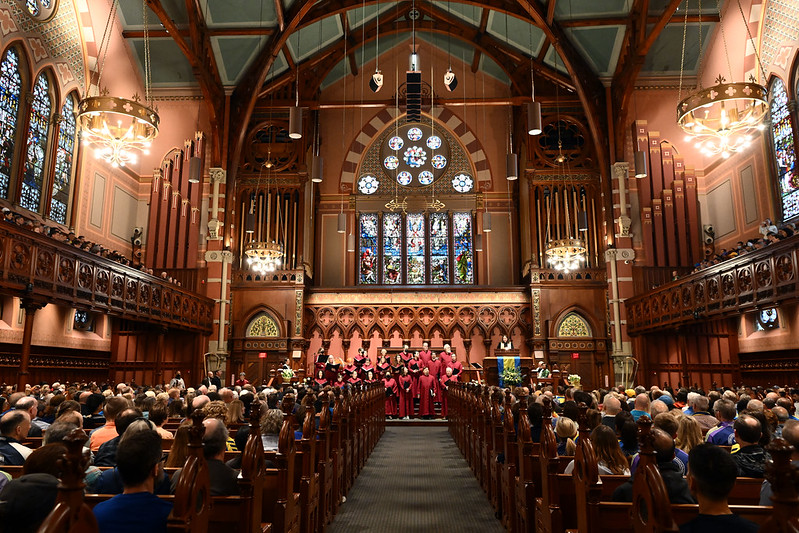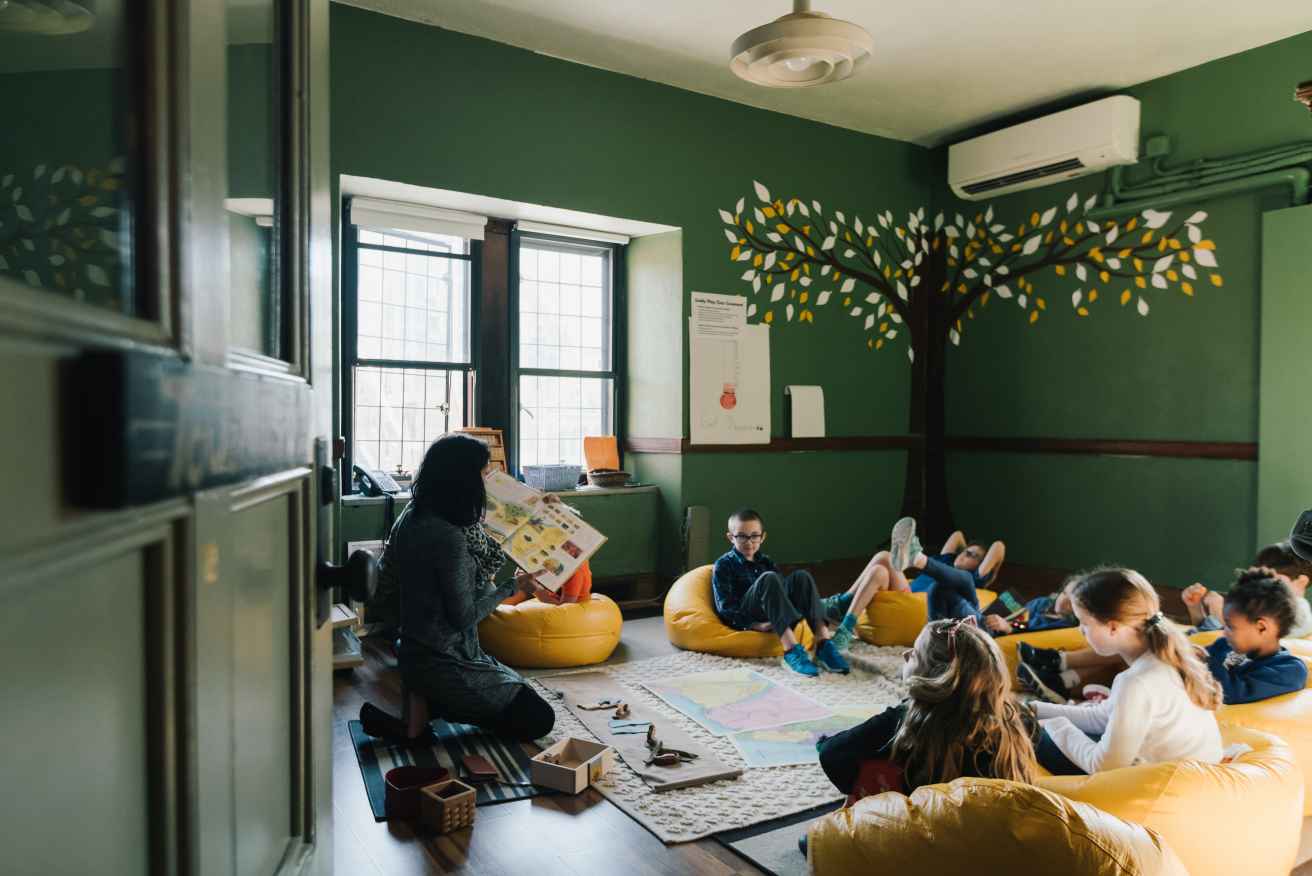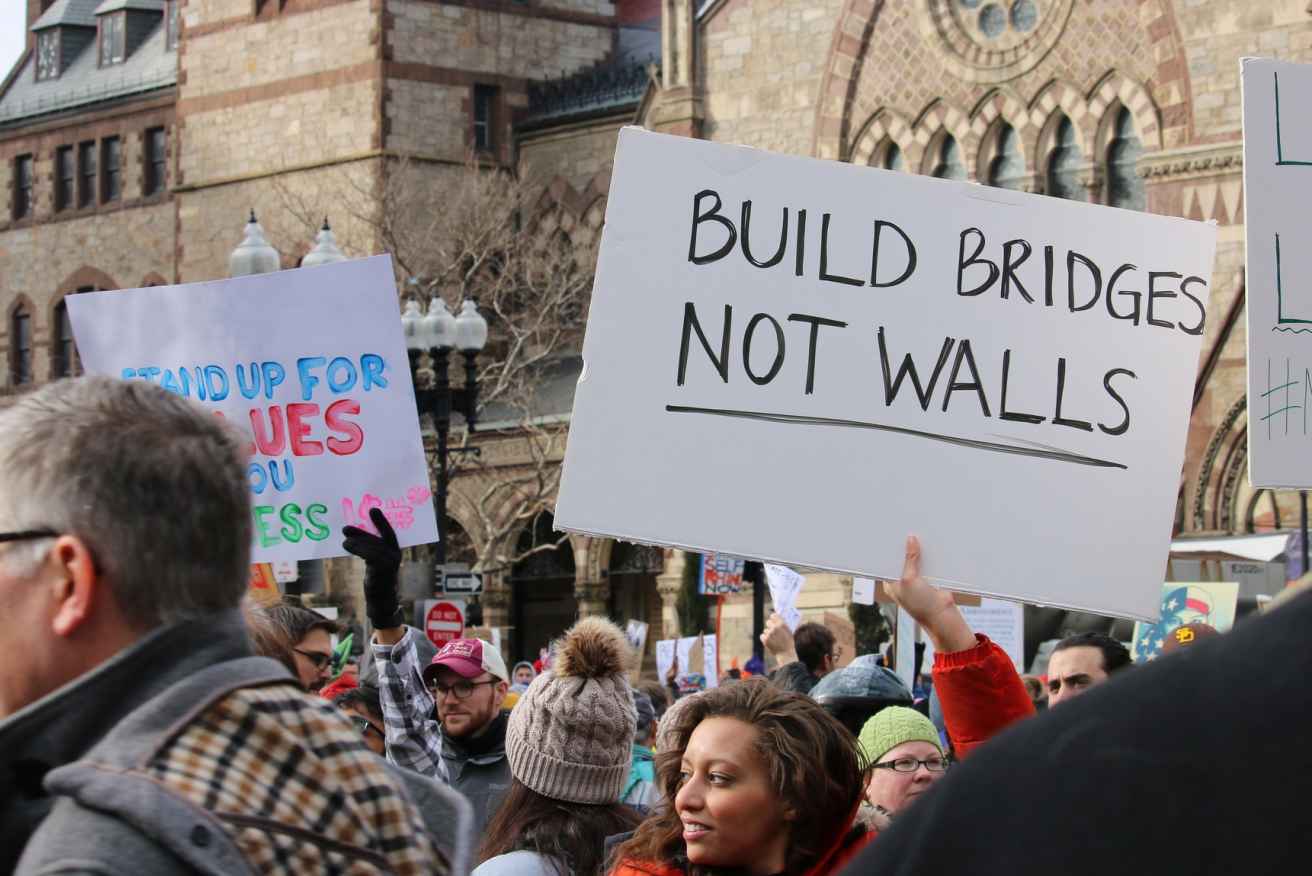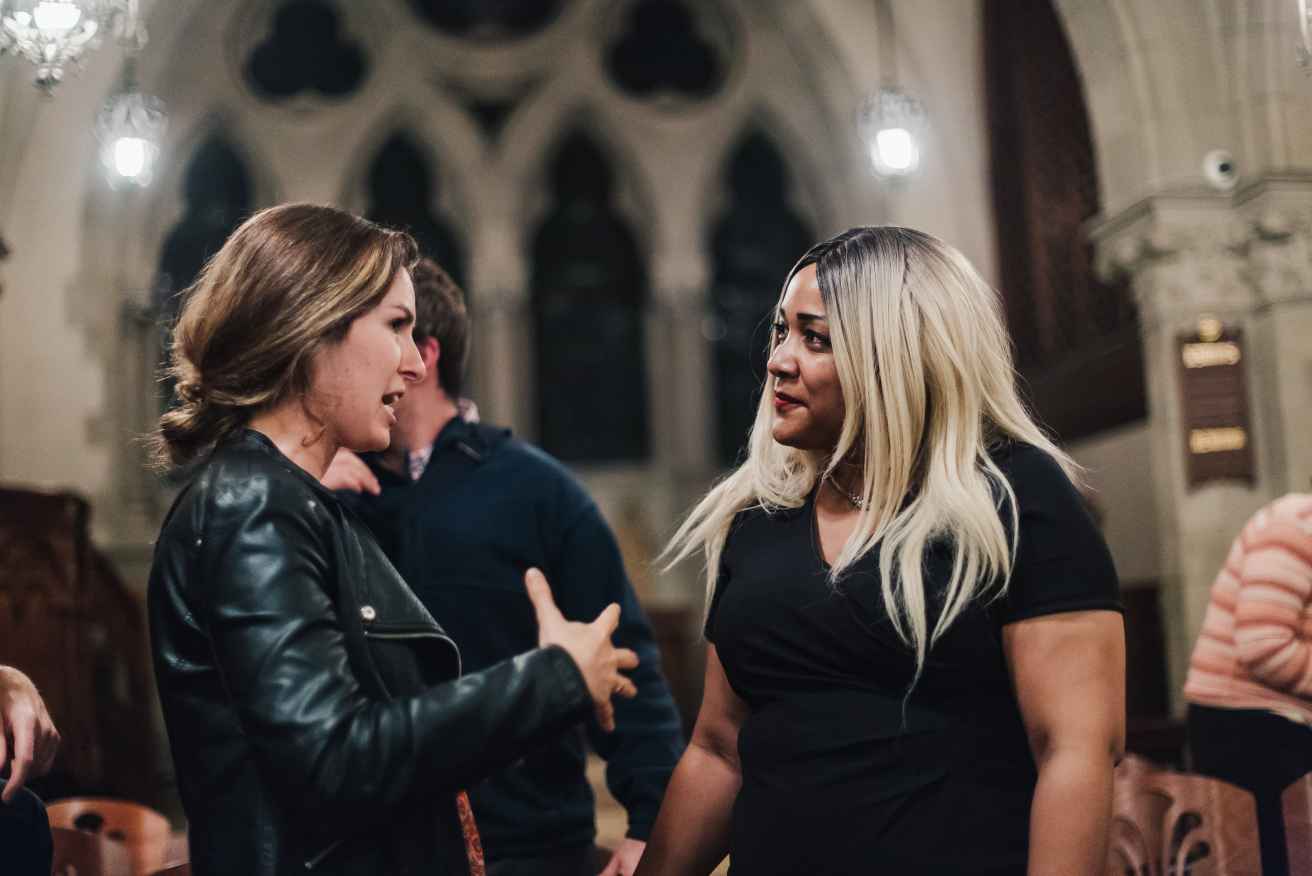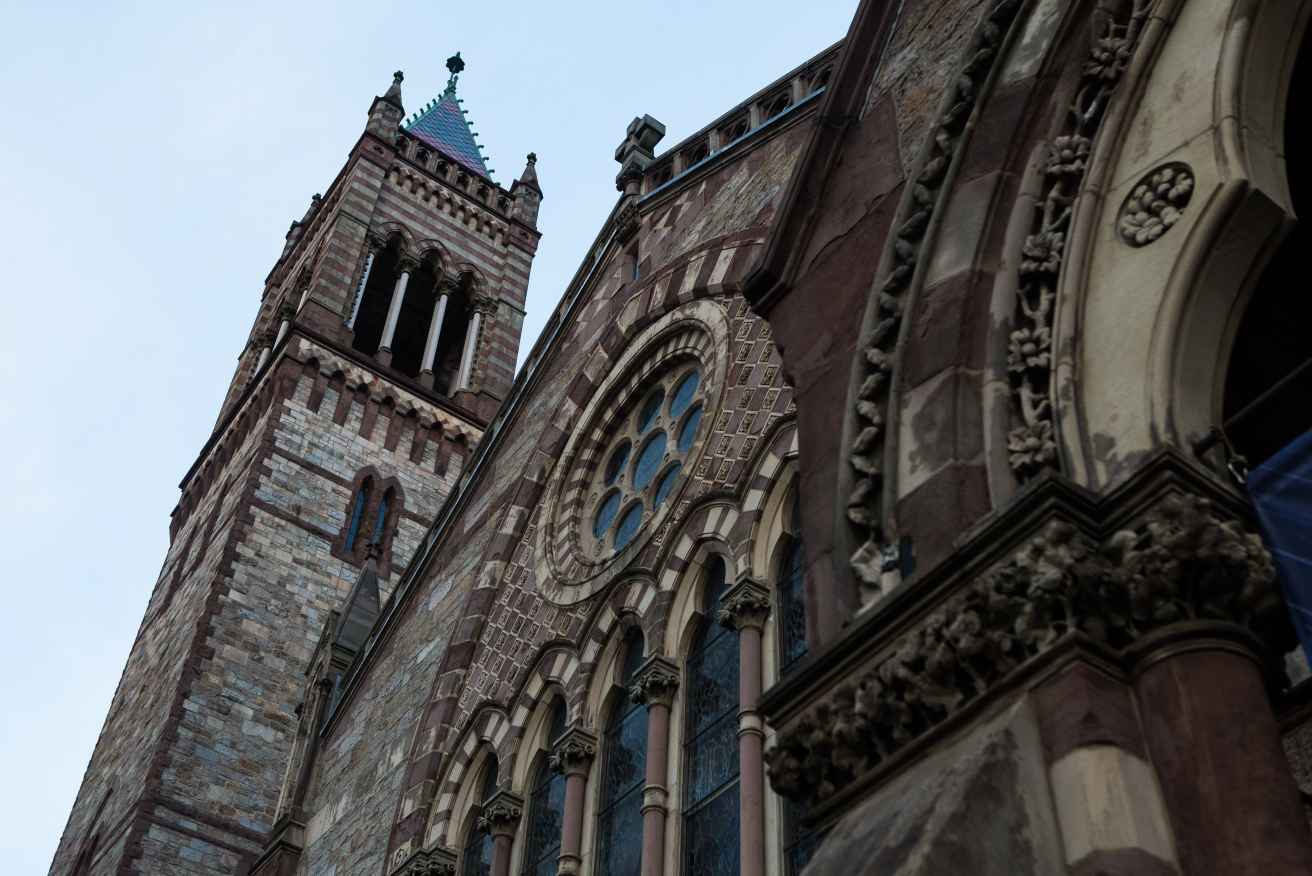Festival Worship - 342nd Annual Meeting Sunday
Festival Worship - 342nd Annual Meeting Sunday
The Book of Numbers
Transcript
The Book of Numbers—one of the five books of Moses … of the Torah—tells a critical, if unassuming story. It tells the story of how the Israelites organized themselves to undertake the next great chapter in their history.
The Book of Numbers begins at the foot of Mount Sinai. The children of Israel had been freed from slavery in Egypt, had crossed the waters of the Red Sea to freedom. Now, bedraggled from their adventures, but drying out, straightening themselves up and sorting themselves out, they turn their sights to the new horizon to which God is calling them: the Promised Land.
They have a problem, a challenge: how do we get from here to there? How do we get from Sinai to Canaan? How do we cross the great, menacing, treacherous wilderness to attain the Promised Land, a land flowing with milk and honey? And, equally as important as arriving, is the journey. How do we navigate these next 40 years—with all their perils and possibilities—in the good graces of God?
It is no small matter organizing an entire nation to undertake a journey, an exodus. They had to organize food and water, shelter, clothing, childcare, medicine, hospice care, worship life. They had to come up with a method to manage livestock and tents, setting up and breaking down, packing, transport for the ill or old, protection from the weather, and defense against bandits, armies and animals. They had to tend to navigation… determine a route that is as expedient as possible, accessible to water, but not too rugged.
Moses orders a census of the people … a taking stock. Who are we? How many? How many children? How many ill?
Second, Moses orders them to take stock of their assets: “How many young men of fighting age do we have?” he asks. And, “How many wise elders?” he asks. He inventories livestock, material, equipment, supplies and tools.
Most critically, a large section of the Book of Numbers is taken up with the care of the house of God. Out in the wilderness they design a portable sanctuary. Their Tent of Meeting is designed for a people on the move. It is easily set up, dismantled and ported.
Not least, Moses identifies a people—one of the twelve tribes—to take primary responsibility for all matters sacred: for the Tent of Meeting, as well as for prayer and praise, sacrifice and thanksgiving, funerals and weddings.
The Promised Land is a long way off. The Book of Numbers is a strategy implemented to achieve both a destination and a way of life.
On this Sunday of the 342nd Annual Meeting of Old South Church, it is time to pause, sort ourselves out and take stock.
Like Moses and the Israelites we, too, have a destination … not a Promised Land but our Vision for the 21st Century to which God is calling us.
What is the State of the Church?
In a word: Amazing. Inspired and inspiring. Alive. In mission. Being formed for service and witness. We are in good shape. We are in great shape. We are blessed and favored of God.
Who are we? We are a family, a nation of 581 full members, 116 children, and 57 Associate members. We are a total of 754 members and, we have 177 people who have identified themselves as “friends.”
We are organized into 16 boards and committees (3 boards, 13 committees) engaging the talents and the passions of 143 people.
In addition, we have three Vision Task Forces with a total of 31 people, whose job it is to attend to navigation and logistics.
Last year 15 of us were sent out from this place in far away mission. This year, another 25 - 30 are signed up.
Well over 100 of us are engaged in serious, intentional Christian formation: in Bible studies, Book Group, Faith on Tap, the Urban Body of Christ, Reading the Bible from the Margins, Lenten studies and more.
We have 15 Active Fellowship Groups.
Last year our knitters knitted and our Care Crew delivered 13 Prayer Shawls.
Our note writers sent out 874 Care Cards.
Over the course of the past seven years we have mentored 9 seminarians. Two of whom are still with us. The other seven are recognized leaders and pastors throughout the UCC.
We know we cannot address the world’s needs on our own. And, so, over the course of the past 300+ years we have entered into partnership, and/or established numerous institutions, organizations and associations. We support them with a combination of volunteer time and talent as well as dollars. These are the mission arms of Old South Church.
Continuing to take stock, we are blessed with three amazing sanctuaries. They are conveniently offered in sizes large, medium and small.
Average weekly attendance at Jazz Worship is 60, and at First Worship is 103 and at Festival Worship 383. Put differently, we have an average weekly worship attendance of 546 people (almost equal with our membership). The UCC’s Annual Report records that while there are UCC churches in Massachusetts that are larger than ours—1000 members, 900 members, 700 members—none has a weekly worship attendance larger than 300. Half of our growth over the past five or six years has come through our two newest services: Jazz and First.
We have six choirs at Old South, old and young, choral and bells.
We served communion to over 10,000 people in 2011. Our budget for bread and grape juice goes up each year. As Bonheoffer averred, grace is not free!
Last year we baptized 23 infants and children, and 4 adults. Adult baptism is one of the most significant indicators of a vibrant church.
One of the questions we want to ask as we take stock is this: How porous are we to the world outside our doors? Last year we had over 80,000 visits to our website and nearly 43,500 unique visits.
Our web site was visited by people from 122 different countries.
We also know we average over 50,000 visits to our sanctuary each year. Over 3,000 of those visitors leave prayers in our Prayer Box (an average of over 65 prayers each week) and almost an equal number take one of the beautiful Prayer Cards we leave on the table (yet another ministry of the Care Crew).
In addition, we estimate that your clergy together interact with the homeless, the vulnerable about an average of 5-10 times per week.
Just last year we hosted four large, city wide interfaith services. 1) The Annual Pride Interfaith Service; 2) We were a model church site for an nation-wide initiative called Faith Shared, in which I invited a Rabbi and a Muslim to share worship leadership with me; 3) We hosted the city-wide Vigil for Victims of Japan’s earthquake and tsunami; 4) and, not least, we were asked by Deval Patrick to host a service of Thanksgiving on the occasion of his 2nd Inauguration. In his note to me, the Governor said it was the best part of his entire day.
In addition to hosting, Old South Church was the primary mover and shaker, organizer and impetus for two major interfaith events to commemorate the 10th anniversary of 9/11: one was held in Copley Square (1,000+) and the other on the Esplanade (6,000+).
Taking stock of our material goods, we are blessed with all that we need for this journey. We are in possession of one, smashing, eccentric, over-the-top National Historic Landmark.
In fact, we are four separate buildings: our Sanctuary, our towering Campanile, the Parish House and the Gordon House. Within these buildings we are blessed with three sanctuaries, three kitchens, one stage room, and 26 offices, classrooms and meeting spaces.
In addition to our own uses of this space, we are home to the Old South Preschool, Snowden International High School, Amnesty International, Chorus Pro Musica, Back Bay Ringers and Poor People’s United Fund. On a weekly basis we host 9 different support groups. There are six distinct outside groups who hold weekly meetings here.
On any given year we are the venue for 2-3 graduations, 2-3 conferences, 2-3 fundraisers, 17 musical performances and 27 weddings.
In addition to our buildings, we are stewards of silver, books and money.
In addition to the silver communion ware in our vault here, we also own 19 English and Colonial silver objects (communion cups, flagons, beakers, tankards, chalices and patens and one baptismal basin). These objects have been on loan since 1939 to the Museum of Fine Arts. A few items are on permanent exhibit, while most in their vault. These items of silver range in date from 1607 to the late 1700’s, and include one Paul Revere communion cup (1758).
Old South Church owns the Prince Library: 2,000 volumes of precious rare books and manuscripts held in the Boston Public Library.
And, depending on the day, we are the very fortunate stewards of some $18 million dollars in endowment.
How are we? We are well-equipped, well-endowed, blessed and favored of God! We embark upon the Vision to which our God is calling us with an abundance of faith, attitude, human capital, equipment, supplies, material goods and plenty of spiritual chutzpah.
There is, however, one matter, that needs attention: our building, this fabulous, extravagant, irrepressible building—with its gathering spaces and sanctuaries, its kitchens and classrooms, its gargoyles and campanile. We owe this building millions of dollars.
Over the course of the past few years, your leadership—the board of Trustees, the Church Council, the Operations Committee, the Vision Working Group and the Finance Committee—have been meeting and talking together. Together, we now know the following:
We owe this building $4 - $5 million in the short term for basic, urgent upgrades to our heating system. Within a couple of more years, we will need to produce another $2 - 3 million to address fire suppression and to bring our elevators up to code.
But, in truth, to achieve sustainability—to maintain the building for the uses to which it is intended, to be the church, strong, vital and in mission—we need a total infusion of $15 to $20 million. Or, to put it another way: we need an additional $600,000 of annual income.
We are faced with a challenge—a challenge that will require a multi-pronged strategy. But it is not a challenge we cannot meet. It will require of us that we have open and honest conversations, that we listen to one another with respect and that we make some hard decisions.
In December of 2010 the members of this congregation adopted the Vision for the 21st Century. We believe it to be that to which our God is calling us. We also agreed that this building—this magnificent, irrepressible, over-the-top, Northern Italian Ruskinian Gothic building—is integral to our mission and ministry.
This building, we agreed, serves as a witness, a visible, tangible reminder in a secular city of the Living God. It is as thin place … a place of beauty and of Spirit, of love and justice … a place and a people pointing to God.
This building serves as a gathering place, a crossroads, for people of different faiths and no faith. Located at one of the great public squares in America … at the intersections of the inner city and the center city, the Back Bay and the South End, at the crossroads of an historic past and a compelling future we are uniquely positioned to continue to play a role in the healing of this city.
And, this building serves as a sanctuary in this city: for the lost, and the afraid, the vulnerable, the outcast the rejected; for those gathering to handle the great mystery of death, to celebrate loved ones and send them home to God; for children’s Christian education and adults being formed for Christian service. Open seven days a week and free to the public, we are sanctuary and shelter, refuge and solace.
This building does not accomplish our ministries of mercy and beauty but it is a springboard and catalyst.
Here we are steeped in the fiery justice of the prophets, in the ache of God for those who suffer and are oppressed. Here we learn what is not taught out there: generosity, forgiveness, mercy, peace.
With its great size and great age this magnificent building evokes our long and venerable past … a past peopled with the likes of Benjamin Franklin and Phillis Wheatley and Samuel Adams … a past associated with and, indeed, authoring, momentous times and circumstances.
For more than 300 years we have played an integral a part in this nation’s most significant challenges: in the so called “witch” trials and in abolition; in independence and civil rights; in desegregation and affordable housing; from challenging McCarthyism, red-baiting and Islamaphobia, to championing gay rights and equal marriage. Why? How? Because of the God whom we meet here … who radicalizes us and forms us for service.
But, we cannot continue as we have. We owe this building.
What the Council and Trustees and Operations Committee and Vision Working Group will propose to you (not today but in the near future) is a multi-strategy approach. There is no single answer, no silver bullet. But we are not lost. There are answers. We have the means if we are willing to summon the will.
A multi-strategy approach will include some combination of the following:
We want to grow the congregation. The Vision calls us to grow this congregation by 7% each year until we reach 1,200 members. The problem is that 1,200 members cost more: more grape juice, cookies, granola bars and worship bulletins. While growth is essential, it is not the only answer.
We need to increase our financial stewardship ... engage more and more of in the practice of financial generosity. Sixty percent of our members share in the burden of the ministry with financial pledges. Forty percent of our members do not.
We will need to launch a capital campaign. We estimate that a capital campaign might raise between $3 to $4 million.
We will seek grants for this historic building, but grants are few and far between.
We will need to talk about converting or monetizing more of our assets, including heritage assets, into fuel for mission and ministry.
We need not solves these matters today, but they are facing us down.
Our building is not the church. You are the church. The church is the people. But the building is essential to our witness and our ministry. This building is one of the most visible tools in our tool box: it is sanctuary and classroom, pulpit and font, meeting space and training ground.
Our pealing bell and waving banners … our architectural eloquence, grandeur and size … our magnificent campanile towering over Copley Square, our bold pulpit and unabashed ethics of justice all give strong, grand, startling witness to the Mysterium Tremendum.
And then there is this: our chiseled-into-stone invitation, Behold-I-have-set-before thee-an-open-door. We dare not close that door!
Buildings are important. It was in our Cedar Meeting House (our first building, built in 1670) that Benjamin Franklin was baptized. It was inside the Cedar Meeting House that our 2nd minister, the Rev. Samuel Willard, condemned the “witch” trials and from its pulpit that he called upon the Governor to dismantle the shameful court of Oyer and Terminer that enabled those trials.
It was in our Old Cedar Meetinghouse that a prominent Bostonian and member of this congregation, Justice Sewell, stood and repented of his part in condemning to death so-called witches … and accepted the shame and the blame for his agency in that appalling calamity.
There is a mural painted on the wall of the House of Representatives in the Massachusetts State House entitled: The Dawn of Tolerance in Massachusetts. The mural depicts our Samuel Sewell, in our Cedar Meetinghouse, repenting of his sin.
Not only did Justice Sewell accept blame, it changed him. Steeped in prayer and scripture, his hard heart softened by God, he went on to write, 1) the first anti-slavery tract on this soil (The Selling of Joseph, 1701) and, 2) an essay in which he argued for the humane treatment of American Indians (A Memorial Relating to the Kennebec Indians, 1721) and, 3) Talitha cumi (1725), an essay in which he argued for the rights of women.
It was thanks to our second building, the Old South Meetinghouse—the single largest meeting hall in Colonial New England—that we played so large a part in the American Revolution. It was within its Puritan walls that we hosted the contested meetings that led to the Boston Tea Party.
It was in that house and from that pulpit that our forebears engaged in the arguments and cause of abolition.
It was this meetinghouse that our forebears opened as a recruiting station for the Union Army to signal their strong support of the Union cause.
It was there, upon the news of the assassination of Abraham Lincoln, that our Minister at the time, Jacob Manning, draped the pulpit in black, opened the doors wide and held a city-wide memorial service for a people whose grief and despair were terrible.
It was in this meetinghouse that Phillis Wheatley first heard of the God who loves and liberates slaves. She was stolen from her homeland at age eight, ripped from her mother’s arms and loaded as cargo for the long voyage here. It was in our Meetinghouse that this enslaved child first heard the story of how God called Moses to free those enslaved in Egypt.
The church is not the building, it is the people. But the building is more than piles of stone and slate. It is so much more than carved wood and columns, pews and meeting rooms. It is our spiritual house and home. It is here that we come for courage and solace. It is here that we are schooled in the ways of God.
From Stonehenge to the Crystal Cathedral humans build holy places to come close to the Mysterium Tremendum, the awful mystery that beats at the heart of our shared being. From the Israelites’ portable Tent of Meeting, to this over-the-top Northern Italian Ruskinian Gothic structure … humans build holy places. We cannot help ourselves.
It is here, in this ancient and venerable holy place, that we come to meet the God of the prophets, the God of Jesus and the Mary’s, the God of Phillis and Samuel and Benjamin.
On the occasion of the 300th anniversary of Old South Church, the congregation commissioned the writing of a commemorative history book. Entitled, “And Plead for the Rights of All: Old South Church in Boston 1669-1969” it was written by Ola Elizabeth Winslow.
In her Foreword to her book she wrote the following:
“The history of Old South Church is more than the record of one New England meetinghouse still in existence after three centuries. Deep under the foundations of the three structures that have housed its thousands of worshippers lie whole chapters of American history and the slow emergence of certain ideas and principles upon which this nation is built—liberty, freedom of conscience, human brotherhood.”
Deep under our meeting houses lie whole chapters of American history.
So, too, in this building and in these people lie whole chapters yet to be written. It is for this that we have been organizing ourselves, readying and equipping ourselves: for the future, God’s future.
That is our charge, our high and holy responsibility.

